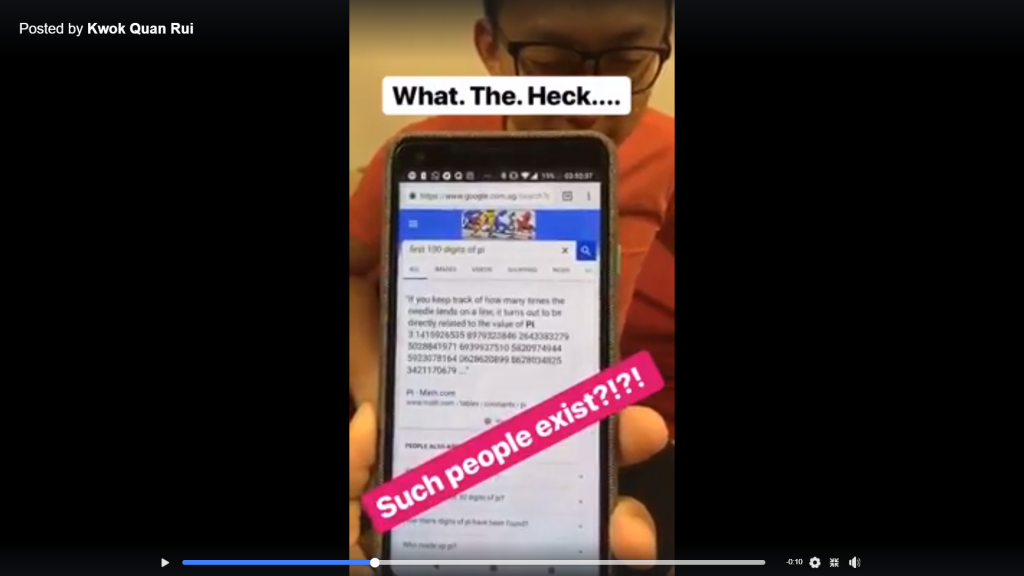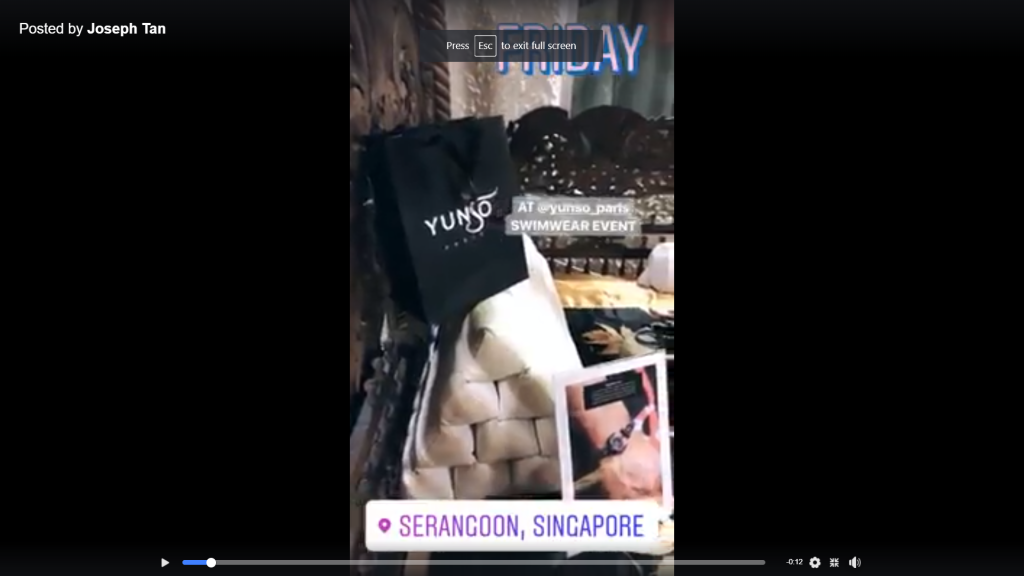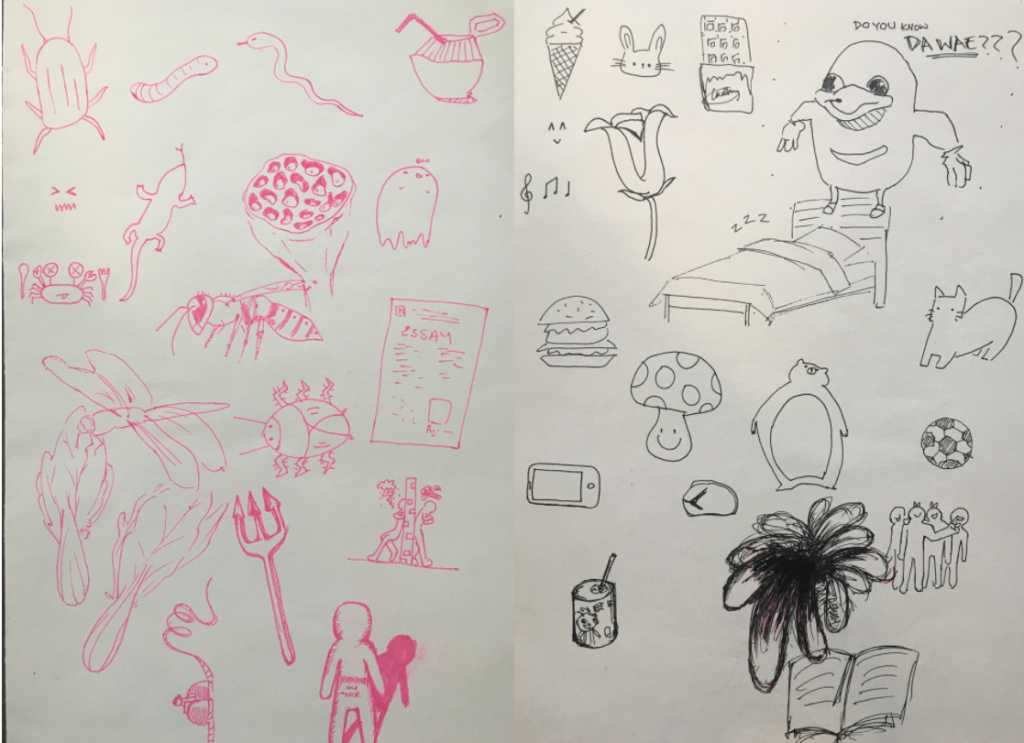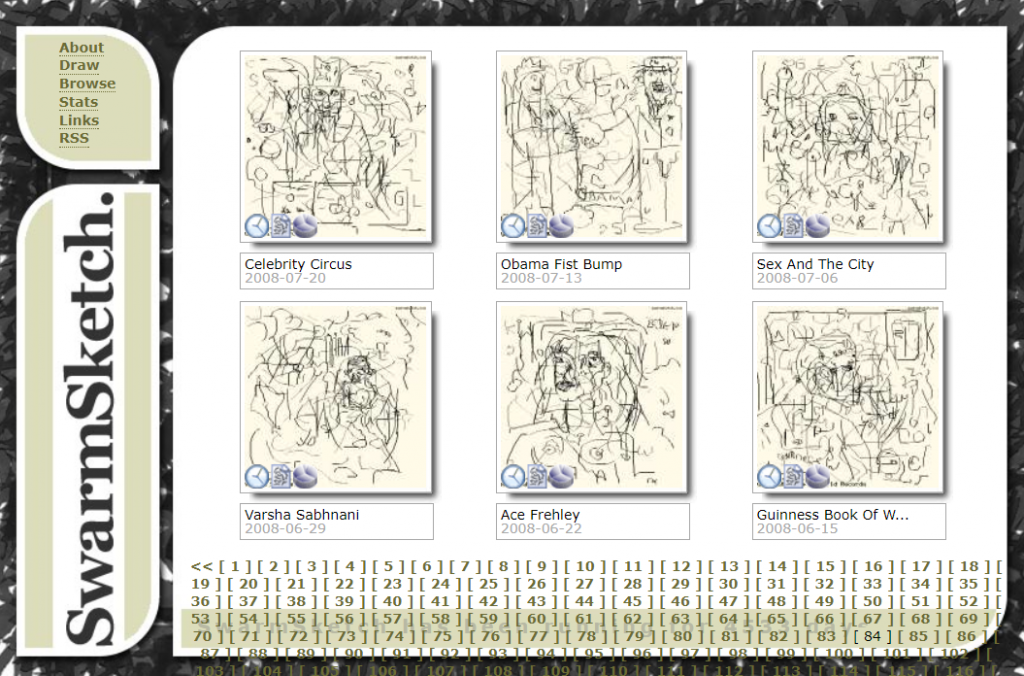Desmond – Project 1 – Final
Research Critique 3 : The Art of Destruction
“The user has to realise that improving is nothing more than a proprietary protocol, a deluded consumer myth about progression towards a holy grail of perfection. ”
Glitch Studies Manifesto, Menkman, R.
The conventional way that we see things nowadays as practical, improving human beings is that the only way to go is up. Everything has to be newer, better or more technologically advanced in order for it to be considered desirable, and I found that concept so toxic and boring. The idea that the old always has to make way for the new, that everything that can and should be wanted should be what we envision them to be; brand new, shiny and wrapped in a thin piece of plastic just to protect it from scratches.
Perhaps there doesn’t have to be a world where the only things that are worth paying attention to are the things that are still shiny and squeaky from just being unboxed. Perhaps everything that has been taught to us, that new is always better, is a lie, and that there is an equal amount of beauty in death and decay as there is in having to constantly try to upgrade and be better. The idea that having to constantly climb up a steep hill of improvement being a consumer myth really intrigued me, and I feel that Menkman R. has a point in saying that we were trained to look this way, especially with the way advertising and commercialising has come.
Everyday we are fed the idea that new is always better, that we should always work hard to afford nice things. The latest phones, the newest clothes, the hippest clubs in town are just some of the everyday things that people dream of having or wanting, and maybe we would not have been that way if not for the 21st century atmosphere.
I wanted to create a project that made people have a new way of looking at things and especially people.
“Those systems might be broken, they might be glitched, and they might be imperfect and noisy, and that might be what attracts us or me to those systems. But still they are functional or functioning in one way or another systematically. So they are connected to one another as assemblages.”
John Cates
Just because rotting fruits are imperfect and unwanted by us does not mean that they are not functional or functioning in another way. In the viewpoint of John Cates, the rotting fruits are just another step in mother nature’s plan. Only because they are of no use to us that they are deemed as unwanted, useless and disgusting. At the end of the day, these fruits will be homes to flies and maggots or be food to other animals and insects, and thus become an important part of the cycle of life and death.
Symbolically, I wanted them to stand for society as different sections and representations of people in the society that we live in. People all peak at different times in their lives; just because they aren’t who they want to be right now does not mean that they will not get there, and it also does not mean that you, as another human being, have any right to judge whether or not they will get anywhere.
Perhaps it is just in us to only notice the things we seek; to look at the wealth that people have, or the cars they drive or the homes they own. Parallel to Menkman’s mindset, my project aims to allow people to understand that perhaps, just because some people aren’t what we are looking for, does not mean we necessarily don’t need them. Perhaps always looking for people better or more skilled than ourselves is a mindset that we’ve been trained and forced to adapt to, that it may not be the best for us.
Micro Project 5 : The Art of Destruction
The slowest but surest form of destruction : decay.
For this project I decided to go with the slowest and most definite form of destruction : decay.
Above you can see the attached images of the fruits before I allowed for them to rot and decay. Below are the images of the rotting and decayed fruit.
The intention of this project was simple : to illustrate society in a nutshell.
While not blatantly obvious, I designed for this fruit platter to be a depiction of society. I chose fruits that rotted at different speeds. For example, apples and grapes were reportedly harder to rot than persimmons and bananas. The idea for the choosing of different fruits was to demonstrate variety and a difference in the speed of rotting.
I wanted for the platter to be a symbolic representation of society. At first glance everyone seems to be prim and proper and at their best. To some, certain fruits look more appetising and appealing than the others. However as time passes most of them begin to decay and rot and become unappealing, while others withstand the test of time and look pretty much about the same as they did before.
The idea of this project was for people to understand that first of all, no matter who or what you are, nothing escapes the undying grasp of time. Eventually, what comes from dust will fade to dust and no matter what you do or how you look right now, everything disappears at the end of the day. It doesn’t matter whether you’re the fat kid who got his wallet stolen every other day or the quarterback jock who pushed past peoples’ queues.
Yet at the same time, it serves for people to realise that not everyone peaks at the same time in their life. It may hold true that the fruits all look equally enticing from the before picture but in the after picture I can quite confidently say that the grapes look the most appetising.
Destruction, in the case of this art piece, helps show a difference. A difference in appearance, most straightforwardly, and in a deeper level, a difference in the points in time where the fruits look individually the greatest. This piece forces people to feel uncomfortable by looking at the image of rotting fruits, and that is why the image is impactful.
On yet another level, decay gives life. While it may seem like the death of the fruits, it also is the birth of the fungi. The fruits are now home to maggots who eventually morph into flies. The very carcasses of the fruits are now the embryo in which new life is bred, and in this sense this art piece isn’t merely about destruction; it’s also a form of creation.
Final Project : Project IDLE PROCESS
Artist References
BLAST THEORY – I’D HIDE YOU
“Can we trigger that uncanny thrill that you feel when you see a webcam for the first time and experience a portal into another part of the world that seems – at that moment – to be yours and yours alone?”
– Blast Theory on I’d Hide You
I’d Hide You is a game developed by Blast Theory where players online direct 3 hosts on the ground to guide these hosts to catch each other on film. Each host has a camera that streams what they see and hear live, and the objective of the online players is to guide the host of their choice towards other hosts. When other hosts are caught on their live feed, online players press a button in order to catch these opponent hosts onscreen and score points. Online players are allowed to guide these hosts to ask pedestrians or passers by questions. Online players can also hop from one livestream to another to change the host that they are taking the perspective of.
IDLE is similar to I’d Hide You in how the game operates. Online players are allowed to hop from one livestream to another in order to gain different perspectives and achieve a goal, which, in IDLE’s case, is to find all the keys. It puts the online players’ thoughts and intents into fruition through the actions of the host, and thus the outcome of the game is decided by the online participants. IDLE attempts to bring its audience into it’s world, and, similar to I’d Hide You, wants the audience to be co-participants, bringing them into another world that is both immersive and entertaining.
An interesting aspect to note to this game is that you get to observe and be a part of each individual host’s character and personality. Marcos Dias, a lecturer of Media Studies in Maynooth University, Ireland, observed and posted in his personal blog that while following a host named Matt, he was given a tour of the city of Manchester along with vocal commentary. Matt, at one point during the game, sits down in a kebab shop and begins commenting on the shop’s choice of music. He also distributes cards with information regarding the game to other patrons of the shop.
Such is an interesting aspect of the game which involves the very personal input of the host himself. More often than not in mentioning DIWO art we tend to focus on how the audience can become co participants in this art form that we forget that the host himself is also a participant; the most important participant at that. Matt demonstrates very clearly how his personality and choices in the game can affect the viewing and playing experience of the audience. By stopping at the kebab shop to eat and commenting on the shop’s choice of music, the playing experience of the audience is very adversely altered; some players may not be too interested in such an encounter and may choose to switch to other hosts for a more competitive and exciting experience, while others who are interested in such an aspect of the game stay, observe, listen to and even chat with Matt regarding his stay in the store.
We originally intended to incorporate this personal aspect of DIWO into project IDLE as well. One of our ideas was to tell the participants that the host was getting tired and feeling faint due to the presence of smoke in the gameplay. He/she would then proceed to take a rest first, thus stalling the game and not allowing the game to progress. Such an idea was generated in order to add a more personal touch to the game so that the viewers understand that the host is struggling in the game and to add a more realistic touch to the suffering and difficulty of the situation presented to the protagonists of the game. This also adds an incentive for the online players to play more efficiently and have a sense of urgency in attempting to completing the game. However, due to the lack of time that the participants already faced in completing the game we decided not to go through with such a lengthy section of the project. Kai Ting did, however, at some point in the game, sit down on a chair claiming she was tired to the audience and basically refuse to do anything to allow for the game to progress. Such an input can be paralleled with Matt’s input in I’d Hide You.
Dias also mentions in his blog that two of the most interesting aspects of the game are the random screenshots they got from the streets of Manchester and the interactions between audiences of the game. He paralleled the gameplay to cruising along the streets in Grand Theft Auto, except that the gameplay wasn’t generated by algorithms.
Project IDLE is also similar to I’d Hide You in this aspect as audiences are able to interact and communicate with one another in the comments section. Some audiences began giving input that wasn’t relevant to the game in an attempt to communicate with the host herself. Alvin, a friend of ours who was a player in the game, commented that he was leaving now because he has a class to catch, and wishes good luck to the host. While irrelevant and not contributive to the progression of the game, it added a personal and playful touch to the experience for the audience. It made the game less robotic; if the comments were all only about the progression of the game and not so much of discussion or personal conversation, the level of interaction in the gameplay itself would feel very low and thus it loses some of the essence of DIWO art. Our inclusion of riddles in the clues themselves were also aimed at providing opportunities for the audience to discuss and interact with each other.
Screenshots of the game were also taken, and, while not as scenic as the streets of Manchester, also allowed for participants to be able to keep a permanent memory of such a game.
BLAST THEORY – UNCLE ROY ALL AROUND YOU
“[Uncle Roy All Around You] investigates some of the social changes brought about by ubiquitous mobile devices, persistent access to a network and location aware technologies.”
– Blast Theory on Uncle Roy All Around You
Uncle Roy All Around You is an online based game which requires online players who are gathered at an office to control and direct several street players who are on the actual street to look for a person named Uncle Roy. They operate under a time limit and are allowed to communicate with other online players but not with the street players. When the online players do eventually find Uncle Roy, the end to the game takes a more meaningful twist that plays on the concept of online security.
IDLE borrows the aspect of cooperation and teamwork from Uncle Roy All Around You. Both games require online players to cooperate with one another to achieve a mutual goal. Both games also operate on the premise of having an online player and a street player. Together, these two players must gather sufficient information to be able to win the game.
An intended outcome of the game Uncle Roy All Around You, according to artist Steve Benford, was to make the audience feel uncomfortable. The audience are presented with a thought provoking question “Can you trust a stranger?”, and a lot of the gameplay in the subsequent parts of the game involve making the audience feel uncomfortable in order to challenge them in their beliefs of online security. Segments included things such as asking the player for their address.
A particular audience who emailed their experience of Uncle Roy All Around You documented that the experience was ‘paranoia inducing’, and that there was only a limited amount of guidance provided, which was just sufficient to allow the players to get where they were supposed to go in order to maximise the impact of the experience.
Similar to Uncle Roy All Around You, we attempted to induce paranoia and fear into the audience by the inclusion of feeling giddiness as the game time progressed. Such a feature was an attempt to allow the audience to feel urgency in completing the game.
Regarding the amount of guidance given to the audience, we also made the game easier to complete by expanding the range of their commands so that the search for the clues or the key itself was easier. For example, if the audience were to say “search in the jacket”, we would search every pocket of the jacket even though we originally intended for the audience to be more specific and wanted to prompt “which part of the jacket should I search?” This allowed for a smoother gameplay experience in order for us to be better able to point players in the right direction and avoid frustration.
Also similar to Uncle Roy All Around You, our gameplay also revolved around a fixed narrative, which was that the house was burning down and that we needed to find the keys to escape. The opposite of this can be observed in I’d Hide You, where a more combat, player vs player kind of gameplay can be observed. In that case, there is no backline narrative where the game is supposed to progress, and the game is simply based on a time or score limit.
Brainstorming for our game
When thinking of a location of our game we came to a roadstop due to the amount of locations that we deemed unavailable to us without having to break any rules; most commercial locations would not allow for us to be able to film our project in their workspaces due to the obstruction to their businesses that they would face. Furthermore, we required a large setting where there would be places we would be able to hide our clues and our keys for the players to find. These places would have to be simple enough so as to not appear overwhelming to the players, yet complex enough so that the players don’t find the game too easy or boring.
At the end of the day, we settled for IKEA with the most promising prospects for our project.
Looking for the location
Having settled with IKEA, we had to find 4 favourable rooms for the conduct of our experiment that preferably were not too far away from each other yet at the same time they had to be secluded enough so that we would not be spotted out by staff.
After our test run we concluded that our clues, being on white paper, were not visible enough for the players. Most of IKEA’s furniture revolved around a modern and sleek look that was mostly white and brown in colour, and white paper was too difficult to be spotted under these circumstances. We thus decided to change the clues and keys to yellow paper instead in hopes that it would be more visible for the players playing the game.
Also, commands given by players were incoherent and unclear. Due to the lack of rules that were in place, there was a lot of spam or redundant comments in the comment section that led to a very messy search. We thus decided to implement clearer rules and regulations and guidelines for how the game should be played in order for a better gameplay experience.
Final Project : Project IDLE.
Project Trailer
Introduction
Our final project is titled project IDLE.
It revolves around audiences on InstaLive following 4 different accounts : @idle.kitchen (Desmond), @idle.livingroom (Si Qi), @idle.bedroom (Melo) and @idle.studyroom (Kai Ting)
The premise is that four people are trapped in a kidnapper’s home and the home is burning down. With time running out, the players have to command these four people to find their respective keys in order to escape the house before it burns down.
Duration : 30mins
Location : IKEA Alexander Road
Number of players : ~10-12
Players will be able to command the hosts of that particular instagram account simple commands such as “Look under blanket” or “Look under lamp” in order to find clues as to where the key is or find the key itself.
The Test Run
Through the test run we sieved out major problems we had with our game such as the clues being too vague or the clues and the key being too difficult to spot.
We decided to use riddles as the biggest clue as if any of the users were able to guess the riddles they would immediately be able to find the location of the key. In order to prevent users from googling the riddles and finding out the answers we had to think of original riddles by ourselves. Some examples include:
Wanted by dusk, headless by dawn
Answer: Pillow
I help you when you want to see, but you wouldn’t want to look at me.
Answer : Lamp
Problems faced
We came across a multitude of problems from latency problems to connection problems. For example, the audience would only be able to see what we were seeing on our screens a minute later. Also, there was a point in which the host for the study room (Kai Ting) was unable to connect to the internet due to the poor connection in the IKEA building, and hence the account went offline for about a minute or so.
At the end of the day, everything played into our narrative. Kai Ting told the players that due to the rising smoke in the house she blacked out. Although unintended, this “glitch” allowed for us to instill a sense of panic and rush in our audience. It allowed them to understand that the game time is ending and that they should hurry to find the key.
Also, due to the lack of participants, we decided to “burn a room down”. Before the game began, the kitchen was already burned down and this allowed for only three playable rooms. This was done because there was an insufficient amount of players online, and, had we not done this, the game would not have been completed. In essence this was not the optimal way we would have wanted our game to be played, but at the same time, we would have wanted for a satisfying experience for our players as the game would otherwise have been rather difficult to complete.
Conclusion
At the end of the day, while many things did not go as according to plan, the game turned out well. What I have learned from this is the beauty of art and games in the third space; the allowance for mistakes and flaws in the implementation and execution of the quite literal game plan is what makes the game feel real and fun. While frustrating at times, at the end of the day the glitches and lag added to the experience which was live-stream gaming.
If I had one thing I would change or improve on in our project, it would be to have more players, bigger rooms and a more complex puzzle to solve. At certain times there were players who entered the room only to immediately find the key without having found any clues, and this brought a very abrupt end to the solving of the mystery of one of the rooms. This felt very anti-fun to me as there should be some form of progression for players before they are allowed to end the game like that. While it is intrinsic in the design of the game, having a time limit to the game also feels very restrictive to the fun that the game has to offer. Having to work under a time limit with little players meant that some of the clues would probably not have been found and hence, part of the fun of the game was completely undiscovered by the players.
Overall, it was a very positive experience that I had fun with which really taught me a lot about improvising on the spot as well as how glitches and imperfections in the execution of the game can add value to the experience that players get.
Hyperessay : Online Symposium
“It transforms the screen into a live encounter, in the sense it joins the space of the live performance and the audience, making them co-performers.” – Maria Chatzichristodoulou
Online art gives you democracy, because everyone has access to the internet and because of the limitless possibilities that computers give us, it gives everyone a level playing ground. It gives separate artists the ability to come together and create something simultaneously and this adds value to an otherwise flat piece of art that stays on a digital screen.
“There is a notion of freedom and expression. They are able to express whatever they want and wherever they are.”
Throughout the online symposium there were evident lag and latency problems – reinforced by the constant interruptions by Dr. Randall Packer informing the audience to be patient about the technical issues that they were facing. Such is natural because of the nature of the online platform, even if it is unintended. However I would argue that this even adds value to the online performance, because this flaw is what makes the live art feel “real” and live. Imperfection gives the art a more natural feel instead of refined/polished, perfect art, making it feel more down-to-earth where nothing is rehearsed. The raw vibe of the art piece is what makes the art feel true.
With regards to the live Q and A
The live question and answer portion of the symposium allowed for audiences to have a more direct and wholesome feel of the artists answering questions. However, whether or not it was purposeful to the artpiece itself is another question.
In my opinion, regardless of the presence of audience comments, the artpiece would have gone the same way and the outcome or process of the art would not have changed. In this sense, the audience are not co-participants because nothing they say or do would have affected the outcome or process of the piece and to me, this takes away value from the art being live. At this point, whether or not the art piece was shown live would not have mattered, because it could have been pre-recorded and nothing would have differed from what the audience saw on their screens. In this sense, the value of the live art.
Also, the artists selectively chose what questions to answer, and even though they try their best to answer all the questions posted to them, it does not change the fact that they are able to select the questions they answer. This ends up removing the personal aspect from the live Q and A because the ability to hide behind a screen and avoid uncomfortable questions is what made digital art lack a feel of intimacy in the first place.
Leeches piece by Robert Sfuentes
This was an impactful piece because of the pain and discomfort involved for the artist. Audiences had to sit through the artist being sucked alive by leeches and this instilled a sense of pain and discomfort in the audience and hence it felt impactful because the audience felt for the artist.
The artist also mentioned sometime in the comments later that the piece was about social media taking life away from us individuals.
However, in my opinion, due to the lack of audience interaction as the piece was being played out, it did not feel like a co-performance. As mentioned above, nothing the audience said or did would have affected the process or outcome of the artpiece itself, and hence the piece may as well have been uploaded as a video. My argument for this would be : Was there a point of coming up with a third space if it is just a platform for live discussion?
Concluding thoughts
“Since the others look at me, his responsibility is incumbent upon me.” – Levinas
“There is an unsaid expectation/responsibility to respond to someone you invited.”
Above are two quotes that speak very true to me; if people made the conscious effort to tune in to your third space art, it becomes your responsibility to respond to them and interact with them.
The third space brings about a very unique characteristic/feature to the art piece. However, it is still dependent on the nature and context of the piece – is this characteristic impactful enough to make a difference in the outcome of the art piece? Does using the third space LIVE actually add value to your performance?
With careful consideration, the use of the third space can lead to some very impactful and creative artworks. However, I personally feel that a lot of the impact of having art in the third space rests on the shoulders of audience interaction, because why else would live art be impactful if not for the moment-to-moment impacts that the audience can have on the art piece?
Micro Project 6 : Super Participation
This micro project required for us to attempt posting our lives online as much as possible for a 24 hour window in order to create a form of digital identity.
Thoughts
Personally I felt that this project was really difficult as it just wasn’t in my personality to post everything I do online. A lot of the times by the time I remember that I have to post something online, the moment is already gone, and I have to scramble to find something or anything left of that moment to post online. This, while it does sound like a shortcoming in the completion of this project, has actually led to some interesting insights I have had about this project.
Between myself and Joseph
Joseph and I are on the two opposite ends when it came to this project; no matter what happened, he was always on the ball of his feet when it came to posting things online. When he was going to class, he’d post an update along with a selfie attached. When he reaches class, he also takes a picture with his classmates and of course, posts it online with a catchy caption. 
It comes naturally to someone like Joseph to share everything he does online (and it is no wonder he has so many Instagram followers), and while this is no shortcoming, it does reveal a very unsettling truth that probably anything and everything about Joseph can be found online.
Living in the 21st Century they say that there is nothing that cannot be found online; with the availability of personal data online to multinational corporations, there have been algorithms and patterns created in order to best determine a person’s personality and therefore the type of commercial products or commercials that they would be interested in. Along with the issue of data scandals such as Facebook’s scandal with Cambridge Analytica, the reveal of such information online could pose to be detrimental to us in the future.
My personal identity
It came to me that while I feel that my life was quite boring in that 24 hour window, I tried my best to make it look as interesting as possible. I thought to myself, why bother? Does it matter that much that my life was interesting? Is it so important to me that I have to portray my life as “happening”?
And the fact is that it does. Even though it isn’t in my nature to want to post any and everything possible under the sun, if I am going to post something I may as well make it interesting right?
This results in me ending up posting a persona of myself that is more interesting or more importantly, different from who I am. I don’t necessarily have the most interesting of friends who can all recite 100 digits of pi, but it just happens to be a unique talent of one of my friends. I don’t necessarily sit in excessively long transits home over the weekend pondering over what I’m going to do this weekend or where I’m headed in my life, yet I try my best to make myself appear sophisticated and thoughtful as a human being. The truth was, I probably slept half that transit away and got home only to sleep some more.
It is therefore true that my digital persona differs from reality. And it doesn’t necessarily have to be a bad thing.
For example, people look up body builders’ social media accounts to get a glimpse of what bodybuilders do or what they eat or what they bench. They look into these accounts mostly for this kind of information, because that is what the bodybuilder is known for doing. Quite hardly do you hear of people looking at body builders for the kind of pen they use or the kind of pet they have; this information is essentially redundant in a bodybuilders’ social media accounts. Sure, they create a form of intimacy between the audience and the bodybuilder himself by allowing the audience to understand that the bodybuilder has a normal life and has things that he does aside from bodybuilding, but it doesn’t take away the fact that the main reason these audiences or followers of the bodybuilder follow him is because he bodybuilds, and that they are interested in his bodybuilding. It doesn’t have to be how they can be like him, it can also be about how he takes pictures or how his pictures look good. At the end of the day, they’re interested in his bodybuilding and less of him as a whole person.
Creating an online digital persona of yourself could therefore allow yourself to be more marketable, because people know what to expect when they look you up. Instead of having to scroll past 10 posts of you falling asleep in bed or looking at the scenery you see, they get to see you benching or giving advice on bodybuilding or simply looking at the improvements you have made as a bodybuilder. And while this helps you and your cause, it makes a simple statement that an online and digital persona, while plausibly accurate, can also be easily falsified.
It thus teaches us as both posters and audiences of social media that we have to be careful of what we post and what we take in as information about someone else.
Research Critique 2
The Third Space is an opportunity.
The third space offers an opportunity like no other for collaboration; a space not limited to the constraints of the physical. Suddenly, the biggest problem of all between collaborating artists is gone. The problem of distance, and not having a common ground to showcase works of art, has been made null by the existence of a common ground accessible to not only both artists without problem, but also all audiences.
With technology, nothing is impossible anymore online. If you ever were short of materials such as paint or pencils, fret no more because computers allow you to make digital art that look just like traditional art without having to fret over the costs of paint or paper. If you ever lacked the time or the workshops to create 3D art, computers allow you to render 3D mockups to make sure you don’t waste that much time prototyping and having to be constrained to your imagination as to how the project would look like in reality. With the boundless possibilities of what a computer can do, the third space has not only allowed for limitless connectivity and collaboration, it has also collapsed several key problems that have held artists back. Any constraint that’s physical, all those aren’t problems anymore.
On top of all of that, the ability to collaborate LIVE is yet another perk the third space has offered. An issue with an online platform is always intimacy; how does the art feel real? How does a digital illustration of the Mona Lisa differ from that of the real deal sitting in the Louvre?
They say that no matter how many times you tell a child the pot is hot, he’ll still have to touch it just to be sure, and I quite relate to this statement. Nothing feels quite as real as having a piece of art to hold in your hands or touch with your palms. The physical being of it is enough to add an extra layer to the art that digital art just cannot replicate. That is one of the biggest flaw of art being digital, yet it doesn’t change the fact that art in the third space can be intimate.
With live feeds, the ability to interact in real time gives art in the third space a different kind of life. To know that you can work in real time with someone halfway across the globe and create art, that is beauty in itself. It may not be pixel perfect, or even time-synced perfectly, but all these tiny flaws add beauty to what we call art in the third space. The fact that we can attempt to interact in real time on a platform that is virtual adds intimacy to our art, to tell audiences and to tell ourselves that it is possible to create art regardless of physical boundaries.
With neutral objects in between, we can always try our best to falsify a feeling of realness. Throwing objects, moving objects or drawing the same object across screens; such actions that try to combine the actions of two separate parties into creating one single form of art or movement create a single art piece. The idea of creating a single object despite being in two different locations being brought across allows for two artists to bring across an image of togetherness in the creation of something.
And just like that, as long as there is a fluidity in movement and speech of the two artists, a connection is created. It allows for the audience to feel a collaboration in the works; that there isn’t just one artist but two. Two artists creating one art piece.
My project with Melody
In our little endeavour, we tried to create the illusion of throwing food across two screens with the help of our friends. In that way, the audience essentially see the magic of food being thrown from Melo’s hand in one location and magically appearing in another location into my mouth. While it may not be the most realistic of art pieces or even the most interesting, the struggles and laughter that came along with creating the art piece are what made it real. Because of the time lag that came with using an internet connection and streaming live, people start to empathise with us as artists and laugh along with us with each attempt we make in order to try and get it right.
By using the third space we have allowed for us to do something “impossible”. The third space was a platform for us to create an illusion that something like this was possible.
Micro Project II (DIWO)
HOW IT WORKS
“[…] art has become too narcissistic and self-referential and divorced from social life. I see a new form of participatory art emerging, in which artists engage with communities and their concerns, and explore issues with their added aesthetic concerns“ (Bauwens 2010)
Our project revolved around the idea of peoples’ perspectives on fear and love.
By asking people to draw their worst fears in pink and their favourite things in existence in pink on separate sheets of paper without giving any information on what the art piece is about, we force people to rethink the associated feelings that they have with certain colours; arachnophobiacs have just drawn their worst fear in the colour of Hello Kitty’s hairpin.
The intention lies for the audience to eventually understand that their fears can be made manageable by perspective and that what they fear may be another person’s love.
WHY IT’S D.I.W.O
It brings all actors to the fore, artists become co-curators alongside the curators, and the curators themselves can also be co-creators.
The success on the piece hinges on the collective effort of the audience, who in this case, are also the artists. Without a significant enough number of entries, the piece would not have its intended effect, and thus without an audience there would be no art piece. Such is a characteristic of D.I.W.O., which, in essence, draws upon the sum effort of several and not just a singular artist to determine both its meaning and its form.
SIMILAR WORKS OF ART
Swarmsketch is a website that allows for each user to contribute one line to a popular search topic that changes weekly. An additional function allows the users to vote for the thickness of another user’s contribution, leading to very interesting outcomes.
Akin to our piece, Swarmsketch only works if there is a significant amount of contributions, otherwise a single line of consistent thickness could hardly make anything distinguishable.


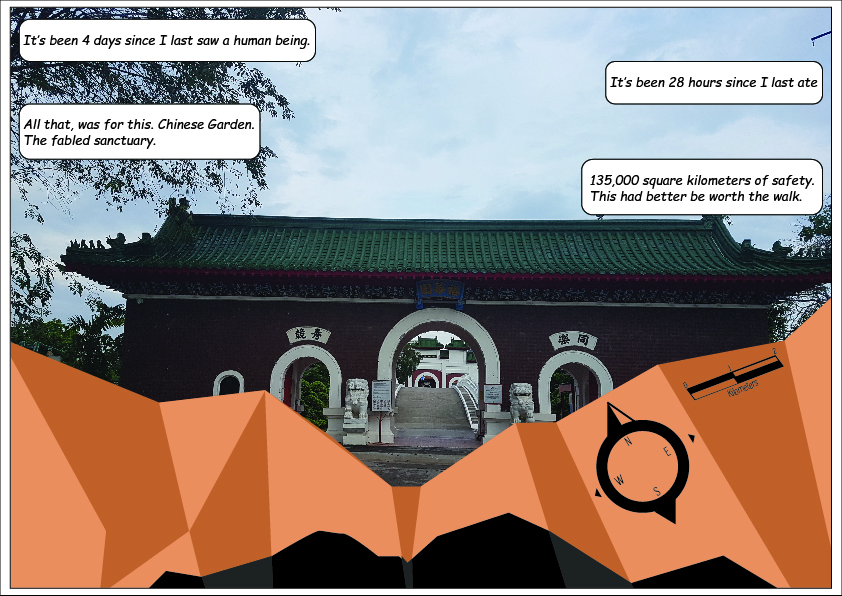

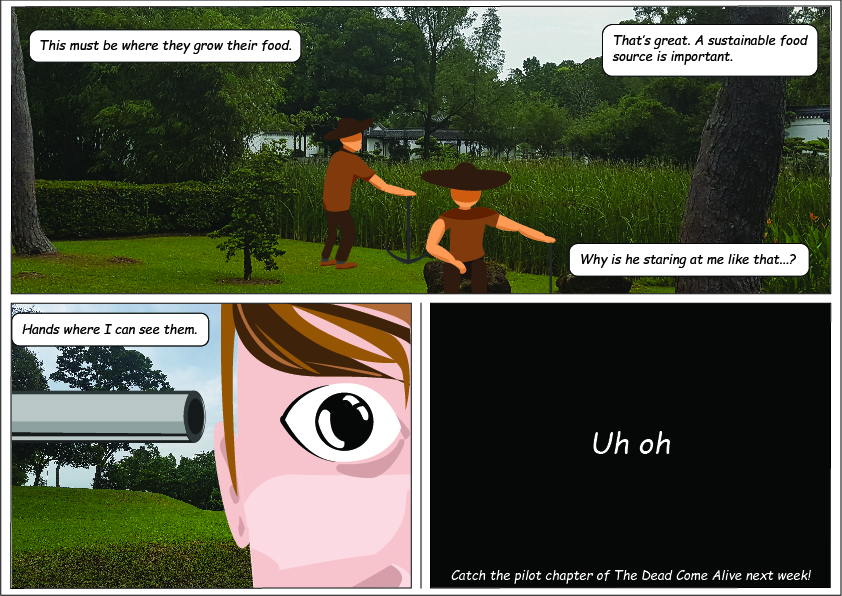


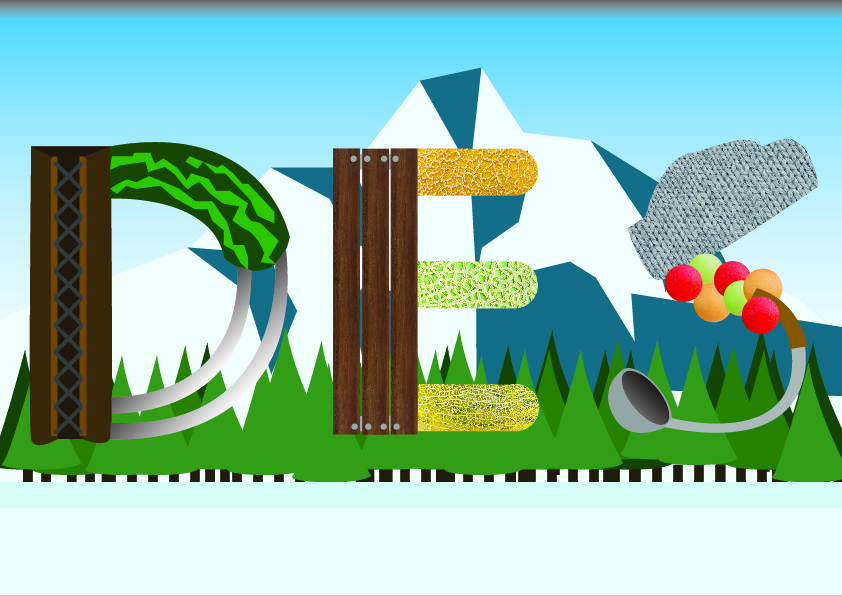








 The bedroom
The bedroom The Living Room
The Living Room

